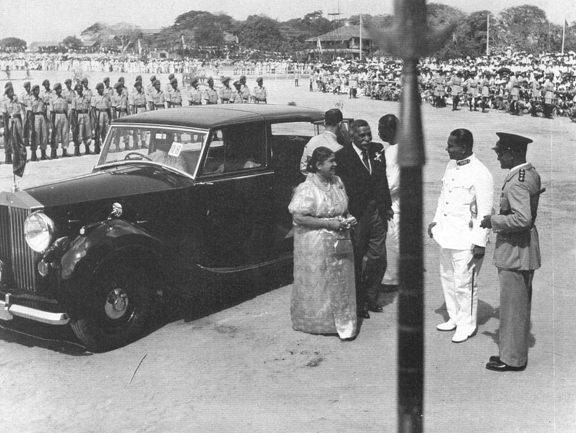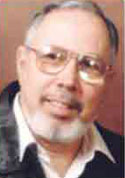AN ANNIVERSARY TO REMEMBER” – by Des Kelly

Any Anniversary is akin to my title of introduction. As we humans grow older, with each passing day, we tend to sometimes forget various Anniversaries, often to the annoyance of Partners and friends. Mostly, these important Anniversaries are those of Birthdays & Weddings which have ‘come & gone’ sadly, as the years pass by.
NOT SO, IS THE 75TH ANNIVERSARY OF A LITTLE ISLAND, FORMERLY CALLED CEYLON,
NOW, SRI LANKA.
Not only is this one unforgettable because of it’s past colourful history, but NOW, because of a really BRILLIANT piece of WRITING by 103 year old D.L.SIRIMANNE from KOHUWALA, a little Suburb of Sri Lanka.
To think of ANYONE who is OVER a Century in age, who can even remember to get out of bed each morning, is most difficult, then along comes Mr.Sirimanne, who not only arises, he sits down to either write (or verbally explain to a much younger scribe, the importance of this particular Anniversary), this is AMAZING, to say the least. Anyway, Congratulations Sir. It is a most interesting read, & Many happy returns of your 103rd birthday. You are a truly GIFTED GUY.

Desmond Kelly. (Mr.Music)
(Editor-in-Chief). e’Lanka.
Celebrating 75th Anniversary of Independence
The writer, D. L. Sirimanne from Kohuwala who is 103 years old

taken at official celebrations on Independence Day, February 4, 1948. Seen being greeted on arrival in the Prime Ministerial Rolls-Royce limousine are ‘Father of the Nation’ Mr. D.S. Senanayake and his wife Mrs. Mollie Dunuwila Senanayake
Source:Island
Ceylon, the resplendent luscious tropical island on the Indian Ocean, like a brilliant emerald on the beautiful pendant of Mother India, was an attraction from ancient times, to many great powers to acquire as a valuable possession. Unfortunately, From the 15th Century to the middle of the 20th Century, a period of almost 500 years the island was colonised by Portuguese, Dutch and British, finally managed to get its Independence from Britain in 1947.
Ancient historians wrote the chronical Mahavamsa relating the arrival of Prince Vijaya with his 700 followers from Sinhapura in North India and landed in this beautiful tropical island called Thambpani, married its Queen Kuveni, and became King and raised the first original Aryan Sinhala Race. It is rather an epic similar to Greek mythology, where a Greek warrior Odysseus landing in Crete with his 700 crew. Thambapani was then inhabited by tribes known as Yakkas and Nagas, probably Hindus from South India. They must have been highly intelligent as they accepted Buddhism when Emperor Asoka of North India sent, to his friend King Devanmpiyatissa, his son Mahinda Thera and a retinue of Buddhist monks to propagate Buddhism. That event was followed by the Emperor sending his daughter Sanghamitta with a sacred Bo-sapling to be planted in Anuradhapura in 250BC which is still alive.
The island flourished. King Dutugemunu built in the City of Anuradhapura in the North Central province, a huge Chaitya known as Ruwanweli Maha Seya, entombing relics of The Buddha and practiced Buddhism in its purest form. Later, King Prakarmabahu during his reign converted several lakes in Polonnaruwa to enormous tanks to preserve rain water from flowing to the sea and use it for cultivation of rice and other grains. The inhabitants were mostly farmers, who cultivated rice on a grand scale for export to the neighboring countries. Even when Britain colonised the island in about 1800, praised the country as ‘The Granary of the East.’
From ancient times the Northern region in the island was a kingdom occupied by Tamils due to its closeness to South India. It happened during the reign of King Elara, a Tamil, there was a war between the Sinhalese and Tamil kingdoms. and King Elara was killed by King Dutugemunu. Feeling sad and to show respect for Elara, he built a monument ordering all who pass it to bow their head in abeyance.
Although there were invasions from South India, some Sinhala kings married South Indian princesses and built for their worship Hindu Kovils in temple premises. Even now, Buddhist worshippers would pay small bribes panduru to seek favours from the Hindu gods. Thus, the Sinhalese acquired a great deal of Indian culture in addition to Buddhism due its closeness to India. Muslim Arabs from the Middle East traded in the coastal regions of the island, for spices precious stones and pearls on their way to the East, settled down in the island and named it Serendib and became inhabitants as Muslims, building Mosques for worship.
The Portuguese arrived in the island for trade in in the 15th Century. They colonised and built churches and introduced Christianity to the coastal fishing folks, and baptised them with Christian names prefixed with the Portuguese title Don. Even the last king of Kotte was baptized and given the name Don Juan Dharmapala. Many Sinhalese in towns and cities for favor changed their religion and acquired Portuguese names. After about 280 years of occupation the Dutch took over from the Portuguese, and colonised for another 250 years or so, and propagated Christianity further, and building more churches, networks of canals for transport produce and Introduced Roman Dutch Laws for governing.
In the 1800 or so, the country was taken over by the British and became a British Colony. The country gained from introduction English education in schools and colleges and the first University in Kandy. Modern roads, railways, bridges, harbours were built and governed by highly efficient educated Civil Servants in charge of the nine Provinces. The British at first introduced coffee plantations, but was destroyed by blight, and Tea was introduced covering thousands and thousands of acres in the hill country and exported to countries all over the world. Ceylon Tea became known worldwide for its pleasant aroma and became the islands main product in addition to Rubber.
Colombo became the commercial capital of South East Asia and its harbour was named by Britain as ‘The Clapham Junction of Eastern Shipping,’ Its popularity spread for ships from Europe to the Far East to bunker fuel, water and victualling. Ceylon was considered the brightest gem on the British Crown as there was peace and prosperity and goodwill among the people.
Unfortunately, WWII broke out in 1939 by Germany and Japan attacking neighbouring countries and the whole world was involved. Ceylon contributed Tea and Rubber and its produce to Britain, Ceylonese fighter pilots, air mechanics, naval ratings and soldiers. The war ended in 1944 when American bombed Hiroshima and Nagasaki with atom bombs destroying them in a few seconds. Peace prevailed all over the globe. Colonial ruled countries clamoured for freedom and India received Independence from Britain on 15th August 1947 and Ceylon was granted Independence the following year on February 1948.
It was a happy and momentous event for Ceylon to be given Independence in 1948 without spilling a single drop of blood. The Union Jack was lowered; Ceylon’s national flag was hoisted. The national anthem was sung, a 21-gun salute was fired, and Britain’s Governor General proclaimed Ceylon an Independent country in the British Commonwealth. In 1972 Ceylon became a Republic within the Commonwealth and changed its name to SRI LANKA.
It is almost 75 years since Sri Lanka obtained Independence from Britain and unfortunately the country was misruled and ruined by ignorant avaricious unpatriotic Sinhalese leaders fighting for power. It is now a bankrupt nation and 80% of the population is starving without food, fuel and medicine. It a disgrace to plan celebrating 75 years of ‘misrule’ as ‘75 years of Independence.’ The 4th February 2023 should be a day of repentance and religious prayers to God, Allah and all the Devas to make Sri Lanka a prosperous and happy nation, with freedom and equality to all its multinational and multireligious citizens in the very near future.
The writer, D. L. Sirimanne from Kohuwala is 103 years old







